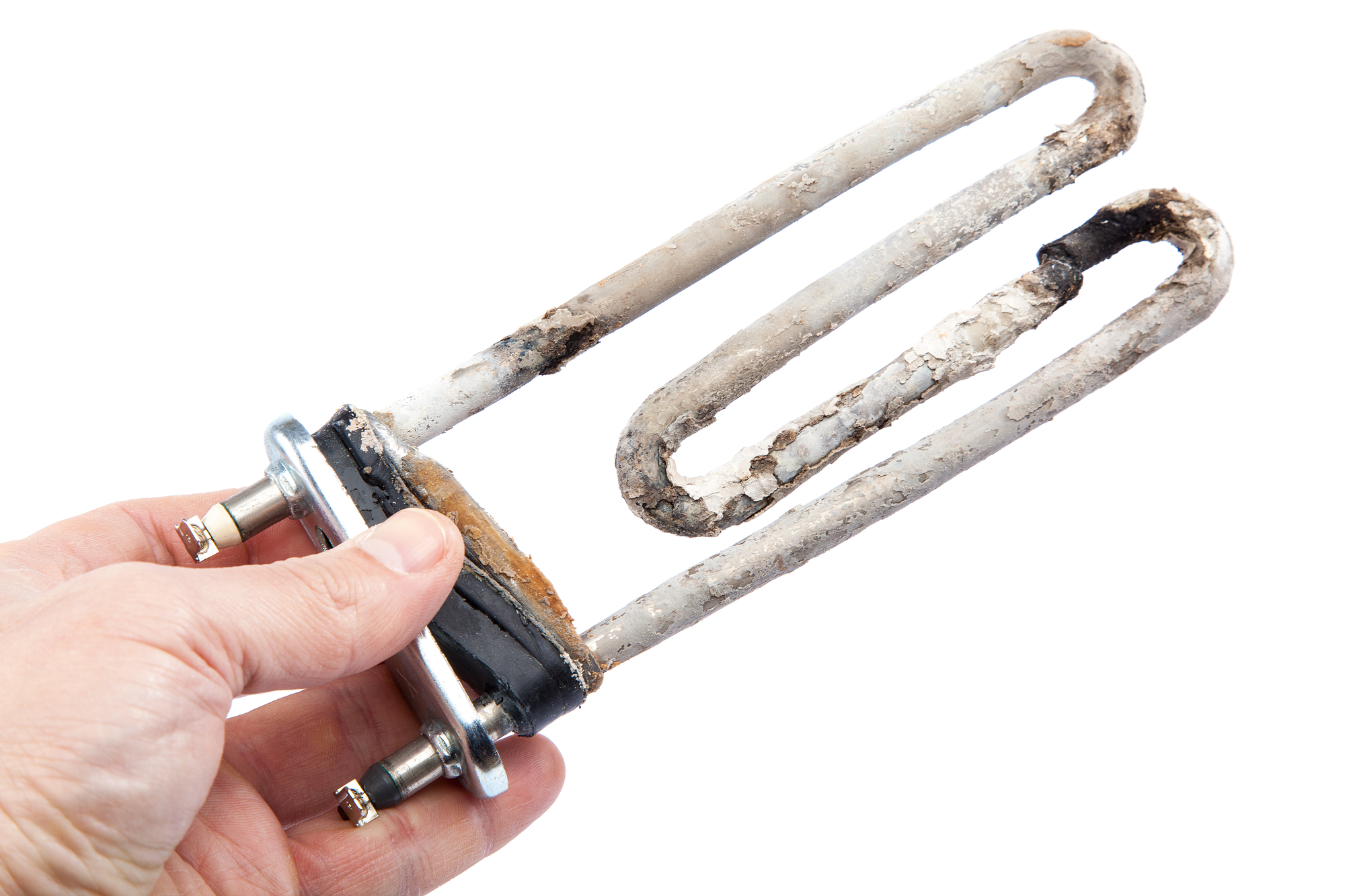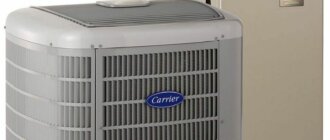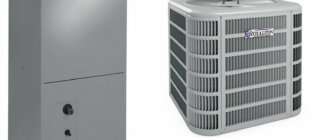Signs that Indicate It’s Time to Replace Your Heating Element
When it comes to your heating system, the heating element plays a crucial role in keeping your home warm and comfortable. Over time, however, the heating element can wear out and fail to function properly. It is important to be aware of the signs that indicate you may need a new heating element, so you can address the issue before it becomes a major problem.
One of the most common signs that your heating element is failing is a noticeable decrease in the amount of heat being produced. If you find that your home is not as warm as it used to be, even when the thermostat is set at a higher temperature, it could be a sign that the heating element is no longer working efficiently.
Another telltale sign of a failing heating element is an increase in your energy bills. As the heating element becomes less efficient, it requires more energy to produce the same amount of heat. This can result in a significant increase in your monthly energy costs. If you notice a sudden spike in your heating bills, it may be time to consider replacing the heating element.
In addition to decreased heat output and higher energy bills, a faulty heating element can also lead to uneven heating throughout your home. If you notice that some rooms are significantly colder than others, or if certain areas of a room feel colder than the rest, it could be a sign that the heating element is not distributing heat evenly. This can be a frustrating and uncomfortable issue, especially during the colder months.
In conclusion, if you experience a noticeable decrease in heat output, higher energy bills, or uneven heating in your home, it may be time to consider replacing your heating element. Ignoring these signs can lead to further damage to your heating system and potentially more expensive repairs down the line. It is always best to address any heating issues as soon as possible to ensure the comfort and efficiency of your home.
How do I test my electric furnace heating element?
To test your electric furnace heating element, you can follow these steps:
- Make sure the power to the furnace is turned off before starting the testing process.
- Locate the heating element, which is usually located inside the furnace cabinet.
- Disconnect the wires connected to the heating element, taking note of their positions.
- Use a multimeter set to the resistance or continuity mode.
- Touch one probe of the multimeter to one end of the heating element and the other probe to the other end.
- If the multimeter reading shows a low resistance or continuity, it indicates that the heating element is functioning properly.
- If the multimeter reading shows infinite resistance or no continuity, it indicates that the heating element is faulty and needs to be replaced.
Remember to always take proper safety precautions when working with electricity and consult a professional if you are unsure or uncomfortable performing the testing process yourself.
Visually inspect element for damage
One of the first steps in determining if you need a new heating element is to visually inspect the element for any signs of damage. This can help you identify any visible issues that may be affecting its performance.
Start by turning off the power to your heating system to ensure your safety. Then, locate the heating element, which is typically found inside the furnace or on the back of an electric oven. Take a close look at the element to check for any of the following signs of damage:
| Signs of damage | Description |
|---|---|
| Visible cracks or breaks | If you notice any cracks or breaks in the heating element, this is a clear indication that it needs to be replaced. These damages can disrupt the flow of electricity and prevent the element from functioning properly. |
| Burn marks or discoloration | Inspect the element for any burn marks or discoloration. These can be caused by overheating or short circuits, which can negatively impact the element’s performance. |
| Corrosion or rust | Check for any signs of corrosion or rust on the heating element. Corrosion can weaken the element and lead to its failure over time. |
| Loose or disconnected wires | Ensure that all wires connected to the heating element are secure and properly connected. Loose or disconnected wires can cause the element to malfunction. |
If you notice any of these signs of damage during your visual inspection, it is likely time to replace the heating element. Keep in mind that even if you don’t see any visible damage, there may still be internal issues that require a replacement. In such cases, it is best to consult a professional heating technician for further evaluation and assistance.
Check element continuity with multimeter
One of the most effective ways to determine if you need a new heating element is to check its continuity using a multimeter. Continuity refers to the uninterrupted flow of electrical current through a circuit. If there is a break or interruption in the heating element, it will not have continuity.
To check the element’s continuity, you will need a digital multimeter. Start by turning off the power to your heating system and disconnecting the heating element from the power source. Set your multimeter to the continuity or resistance mode.
Next, touch the two multimeter probes to the terminals of the heating element. The multimeter should display a low resistance reading or beep if there is continuity. If the multimeter shows a high resistance reading or does not beep, it indicates a break in the heating element, and you will need to replace it.
It’s important to note that sometimes a heating element may still have continuity but be faulty in other ways. If you suspect a problem with your heating system, it’s best to consult a professional technician to diagnose and resolve the issue.
Monitor current draw with clamp meter
If you suspect that your heating element may need to be replaced, one way to confirm this is by monitoring the current draw using a clamp meter. A clamp meter is a versatile tool that can measure the current flowing through an electrical circuit without the need to disconnect any wires.
To monitor the current draw of your heating element, follow these steps:
- Ensure that the power to the heating element is turned off. Safety should always be the top priority when working with electrical components.
- Locate the wires connected to the heating element. The heating element is usually connected to the power supply through these wires.
- Open the clamp meter and set it to the appropriate current range. Make sure that the clamp meter is capable of measuring the expected current draw of the heating element.
- Place the clamp meter around one of the wires connected to the heating element. Ensure that the jaws of the clamp meter completely surround the wire to get an accurate measurement.
- Turn on the power to the heating element.
- Read the current measurement displayed on the clamp meter. This measurement will indicate the amount of current flowing through the wire and, consequently, the heating element.
If the current draw is significantly lower than expected or if it fluctuates erratically, it may be an indication that the heating element is faulty and needs to be replaced. However, it is important to note that this method of diagnosis should be performed by a qualified professional or someone with a good understanding of electrical systems to ensure safety and accuracy.
Note: Always follow proper safety precautions when working with electrical components. If you are unsure about any aspect of monitoring current draw or replacing a heating element, consult a qualified technician.
How do I know if my electric heating element is bad?
If you suspect that your electric heating element is not working properly, there are a few signs to look out for. These signs can indicate that your heating element needs to be replaced:
No heat: If your heating element is not producing any heat, this is a clear indication that it is not functioning properly. Check to ensure that the power is connected and that the thermostat is set correctly before concluding that the heating element is faulty.
Inconsistent heat: If your heating element is producing inconsistent heat, such as heating to the desired temperature but then quickly cooling down, it could be a sign of a failing heating element. This can also be a result of a faulty thermostat, so it’s important to troubleshoot and rule out other potential issues.
Burnt or damaged wires: Inspect the wires connected to the heating element for any signs of damage or burning. Damaged wires can prevent the heating element from receiving the necessary power, resulting in ineffective heating.
Visible damage: If you notice any visible damage on the heating element itself, such as cracks, breaks, or corrosion, it is likely that the element needs to be replaced. These damages can prevent the heating element from properly conducting electricity and producing heat.
Long heating times: If your heating element takes an unusually long time to heat up, it may be a sign of a failing element. This can be caused by a buildup of mineral deposits on the element, reducing its efficiency. Regular maintenance and cleaning can help prevent this issue.
If you experience any of these signs, it is advisable to consult a professional or contact the manufacturer for further assistance. They can diagnose the issue and provide guidance on whether a new heating element is needed.
Note: It is important to exercise caution when working with electrical components. Always turn off the power before inspecting or replacing a heating element and consult a professional if you are unsure or uncomfortable performing the task yourself.
No heat or reduced heat output
If you notice that your heating system is not producing any heat or the heat output is significantly reduced, it could be a sign that you need to replace the heating element. The heating element is responsible for generating the heat that warms up your home or office.
There are several reasons why your heating element may not be functioning properly. It could be due to a faulty electrical connection, a broken heating coil, or a worn-out element. Over time, the heating element can become damaged or worn out, leading to a decrease in its ability to generate heat.
If you have an electric heating system, you can check if the heating element is working by inspecting it for any signs of damage or wear. Look for any cracks, breaks, or discoloration on the element. If you notice any of these signs, it is likely that the heating element needs to be replaced.
In some cases, the heating element may still be functional, but it may not be able to produce enough heat to adequately warm up your space. This can be a result of a buildup of dirt, dust, or other debris on the element, which can prevent it from effectively transferring heat. Cleaning the heating element may help improve its performance, but if the problem persists, it is best to replace the element.
It is important to address the issue of no heat or reduced heat output as soon as possible. A malfunctioning heating element can lead to discomfort and cold temperatures in your living or working space. Additionally, it can put a strain on the rest of your heating system, causing it to work harder and potentially leading to further damage.
If you are experiencing no heat or reduced heat output from your heating system, it is recommended to contact a professional HVAC technician. They will be able to diagnose the issue and determine if a new heating element is necessary. A qualified technician can also safely install the new element to ensure proper functioning of your heating system.
| Signs of No Heat or Reduced Heat Output: |
|---|
| – Lack of heat or significantly reduced heat |
| – Cracks, breaks, or discoloration on the heating element |
| – Buildup of dirt, dust, or debris on the heating element |
| – Discomfort or cold temperatures in your living or working space |
Burn marks or discoloration
If you notice burn marks or discoloration on your heating element, it is a clear indication that it needs to be replaced. Burn marks can occur when the heating element gets overheated or when there is a short circuit in the electrical system. Discoloration can also be a sign of overheating or a buildup of dirt and debris on the element. Regardless of the cause, burn marks or discoloration on the heating element can affect its performance and efficiency, and may even pose a safety risk.
To determine if your heating element has burn marks or discoloration, carefully inspect the element for any blackened or discolored areas. You may also notice a burnt smell coming from the element. In some cases, the burn marks or discoloration may be visible on the surrounding surfaces, such as the heating unit or the walls around it.
If you find burn marks or discoloration on your heating element, it is important to replace it as soon as possible. Continuing to use a damaged or faulty heating element can lead to further damage or even a complete breakdown of the heating system. It is recommended to consult a professional HVAC technician to properly diagnose the issue and replace the heating element if necessary.
| Signs of Burn Marks or Discoloration | Possible Causes |
|---|---|
| Burn marks on the heating element | Overheating, short circuit |
| Discoloration on the heating element | Overheating, dirt and debris buildup |
| Burnt smell coming from the heating element | Overheating, electrical issues |
| Burn marks or discoloration on surrounding surfaces | Heat transfer, overheating |
Tripping breaker or blowing fuses
If your heating element is causing your breaker to trip or your fuses to blow, it may be a sign that your heating element is faulty and needs to be replaced. This can happen when the heating element draws too much current, causing the circuit to overload and the breaker to trip or the fuse to blow.
When the heating element is not functioning properly, it may be trying to heat the water or air in your system but is unable to do so efficiently. This can cause the element to draw more current than it should, leading to an overload in the circuit.
If you notice that your breaker is tripping frequently or your fuses are blowing on a regular basis, it is important to have your heating element inspected and replaced if necessary. Ignoring this issue can lead to further damage to your heating system and increase the risk of a fire.
It is recommended to contact a professional HVAC technician to diagnose the problem and replace the heating element if needed. They will have the necessary knowledge and experience to safely handle the electrical components and ensure that your heating system is working properly.
Remember, a tripping breaker or blowing fuses can be a safety hazard, so it is important to address the issue promptly. Don’t attempt to fix the problem yourself if you are not familiar with electrical systems, as it can be dangerous. Instead, rely on a qualified professional to handle the situation and ensure the safety and efficiency of your heating system.
What causes electric heating elements to fail?
Electric heating elements can fail for a variety of reasons. Understanding these causes can help you identify when it is time to replace your heating element. Here are some common reasons for heating element failure:
1. Overheating: Excessive heat can cause the heating element to deteriorate over time. This can be caused by a variety of factors, such as a malfunctioning thermostat or a blocked air vent. When the heating element overheats, it can become damaged and eventually fail.
2. Corrosion: Exposure to moisture and corrosive substances can cause the heating element to corrode over time. This can weaken the element and lead to failure. It is important to keep the heating element dry and avoid exposing it to corrosive materials.
3. Electrical surges: Power surges can also cause heating elements to fail. A sudden increase in electrical voltage can overload the element and cause it to burn out. It is important to protect your heating system from power surges by using surge protectors or installing voltage stabilizers.
4. Wear and tear: Like any other mechanical component, heating elements can wear out over time. Continuous use and exposure to high temperatures can cause the element to deteriorate and eventually fail. Regular maintenance and inspections can help identify signs of wear and tear before it leads to complete failure.
5. Poor installation: Incorrect installation of the heating element can also lead to failure. If the element is not properly secured or connected, it may not function correctly and can fail prematurely. It is important to follow the manufacturer’s instructions and seek professional installation if needed.
By understanding the common causes of heating element failure, you can take steps to prevent premature failure and ensure the efficient operation of your heating system.
Normal wear and tear
Over time, the heating element in your heating system can experience normal wear and tear. This is especially true if your heating system is older or has been used frequently. Normal wear and tear can cause the heating element to deteriorate, resulting in decreased performance and efficiency.
One common sign of normal wear and tear is a decrease in the heating system’s ability to warm your home. You may notice that your home takes longer to reach the desired temperature or that certain areas of your home are not as warm as they should be. This can be a sign that the heating element is no longer functioning properly.
Another sign of normal wear and tear is an increase in your energy bills. As the heating element deteriorates, it may require more energy to produce the same amount of heat. This can lead to higher energy consumption and, consequently, higher energy bills.
If you notice any of these signs, it may be time to replace the heating element in your heating system. It is important to address this issue promptly to avoid further damage to your heating system and to ensure your home remains comfortable and energy-efficient.
Remember: Regular maintenance and inspections can help identify and address normal wear and tear early on, prolonging the lifespan of your heating system and preventing costly repairs.
Overheating or overcurrent
If your heating element is overheating or experiencing overcurrent, it may be a sign that it needs to be replaced. Overheating can occur when the element is constantly running at a high temperature or if there is a blockage that is preventing proper airflow. Overcurrent can happen if there is a problem with the electrical circuit or if the element is drawing too much power.
Signs of overheating or overcurrent in a heating element include:
- The element feels excessively hot to the touch
- Visible scorch marks or discoloration on the element
- Frequent tripping of the circuit breaker
- Unusual smells coming from the heating system
- Inconsistent or insufficient heating
If you notice any of these signs, it is important to have your heating element inspected by a professional. Continuing to use a faulty heating element can lead to further damage or even pose a safety hazard. A qualified technician can diagnose the issue and recommend the appropriate course of action, which may include replacing the heating element.
Mineral buildup and corrosion
Mineral buildup and corrosion are common issues that can affect the performance of a heating element in appliances such as water heaters and electric ovens. Over time, minerals present in the water supply can accumulate on the heating element, forming a layer of scale. This scale can hinder the transfer of heat, leading to decreased efficiency and increased energy consumption.
In addition to mineral buildup, corrosion can also occur on the heating element. Corrosion is the result of the metal in the heating element reacting with water and oxygen over time. This can cause the heating element to deteriorate, leading to reduced performance and potentially even failure.
Signs of mineral buildup and corrosion in a heating element can include:
- Reduced heating capacity
- Longer heating times
- Inconsistent heating
- Noisy operation
- Increased energy consumption
- Frequent cycling on and off
If you notice any of these signs, it may be time to replace the heating element. Regular maintenance, such as flushing the appliance and descaling the heating element, can help prevent mineral buildup and corrosion. However, if the buildup or corrosion is severe, it may be necessary to replace the heating element altogether.
Question-Answer:
What are the signs that indicate I need a new heating element?
There are a few signs that indicate you may need a new heating element. One sign is if your heating system is not producing enough heat. Another sign is if there is a noticeable decrease in the temperature of the air coming out of your vents. Additionally, if your heating system is constantly cycling on and off or if you notice a burning smell coming from your heater, it may be a sign that the heating element needs to be replaced.
How long does a heating element typically last?
The lifespan of a heating element can vary depending on a few factors, such as the quality of the element and how often it is used. However, on average, a heating element can last anywhere from 8 to 12 years. It is important to note that regular maintenance and cleaning of your heating system can help prolong the lifespan of the heating element.
Can a heating element be repaired or does it need to be replaced?
In some cases, a heating element can be repaired if the issue is minor, such as a loose connection or a faulty wire. However, in most cases, if the heating element is not functioning properly, it will need to be replaced. It is best to consult with a professional HVAC technician to determine the best course of action for your specific situation.
What are the potential consequences of not replacing a faulty heating element?
If you choose not to replace a faulty heating element, you may experience a variety of consequences. Your heating system may become less efficient, resulting in higher energy bills. Additionally, your home may not be heated to the desired temperature, leading to discomfort. Continued use of a faulty heating element can also put additional strain on other components of your heating system, potentially leading to further damage and costly repairs.
How much does it typically cost to replace a heating element?
The cost of replacing a heating element can vary depending on a few factors, such as the type of heating system you have and the specific heating element that needs to be replaced. On average, the cost can range from $200 to $500, including parts and labor. It is recommended to obtain quotes from multiple HVAC professionals to ensure you are getting a fair price.
How can I tell if I need a new heating element?
There are several signs that indicate you may need a new heating element. One common sign is if your heating system is not producing enough heat or if it takes a long time for your home to warm up. Another sign is if you notice that your energy bills have been increasing without any changes in your heating habits. Additionally, if you hear strange noises coming from your heating system, it could be a sign that the heating element is failing. Finally, if you have had your heating system for a long time and have not had it serviced or replaced the heating element, it may be time for a new one.
What are the consequences of a faulty heating element?
A faulty heating element can lead to a number of consequences. First and foremost, it can result in a lack of heat in your home. This can be particularly problematic during the colder months when you rely on your heating system to keep you warm. In addition, a faulty heating element can cause your energy bills to increase as your heating system has to work harder to maintain a comfortable temperature. It can also place additional strain on your heating system, leading to more frequent breakdowns and the need for repairs. Finally, a faulty heating element can be a safety hazard, as it can increase the risk of electrical fires.
How often should I replace the heating element in my heating system?
The frequency at which you should replace the heating element in your heating system can vary depending on several factors. Generally, heating elements have a lifespan of around 10-15 years. However, this can be influenced by factors such as the quality of the heating element, how frequently the heating system is used, and how well it is maintained. It is recommended to have your heating system serviced annually by a professional technician who can assess the condition of the heating element and determine if it needs to be replaced. Additionally, if you notice any of the signs mentioned earlier, it is a good idea to have the heating element checked and potentially replaced.




